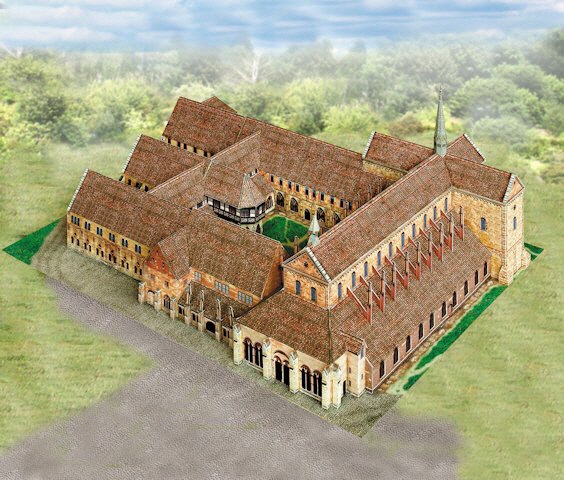Maulbronn Monastery

scale 1:300
length 35 cm
width 26 cm
height 15 cm
degree of difficulty 1
number of sheets 6.5
Maulbronn Monastery
The history of the Cistercian Abbey of Maulbronn already began at the beginning of the 12th century near Mühlacker in Germany. The Knight Walther von Lomersheim wanted to found a new monastery here, but then he had to transfer it because the original location turned out to be unsuitable. An up to then completely uninhabited area in the Salzach Valley was chosen. There is a legend about the choice of location and foundation of the monastery, according to which the monks, who already belonged to the monastery at that time, sent a mule away. When the mule stopped at a spring in order to quench its thirst, the monks considered this to be a sign that they should establish their new monastery here. Nowadays the Donkey Fountain and the mule in the coat-of-arms of the town of Maulbronn still remind one of this legend.
The Romanesque basilica of Maulbronn was already founded in the middle of the 12th century, and this formed the centre of the monastery. To the end of the monastery period in the middle of the 16th century, the monastery was repeatedly rebuilt and added to, so that today, as well as the Romanesque basilica, all the phases of the Gothic period can be found.
One of the principles of a Cistercian Order was to live a life of seclusion from the outer world. For that reason the monastery also had various trades and agriculture so that the inhabitants of the monastery could be self-sufficient.
At the beginning of the 16th century the monastery fell to the Duchy of Württemberg due to political troubles. The then Duke Ulrich of Württemberg chose the new Protestant faith. And so the monastery was secularised. Duke Christoph of Württemberg then founded a school in Maulbronn in which future priests of the Protestant Church were to be taught. In 1806 this school then became the Protestant Seminary and is still located in the monastery building. Some famous people were once pupils there, for example, the astronomer Johannes Kepler and the writers and poets Friedrich Hölderlin, Justinus Kerner and Hermann Hesse.
In the year 1993 Maulbronn Monastery was named as a World Cultural Heritage by UNESCO, whereby the cultural landscape of the Cistercians was of prime importance.
